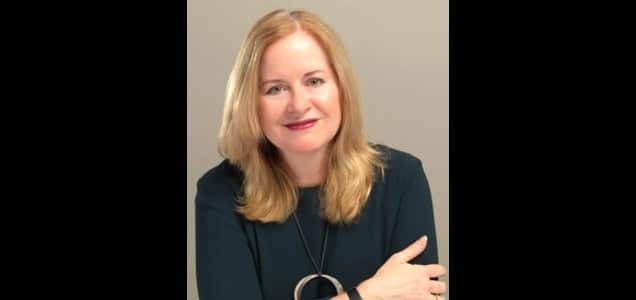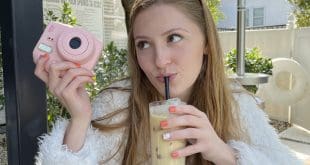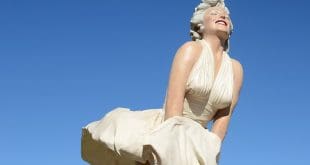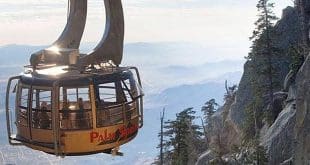Brooke Hodge is the Director of Architecture and Design at the Palm Springs Art Museum. Hodge is a curator, writer, and critic whose credentials include Deputy Director of Cooper Hewitt, Smithsonian Design Museum in New York; Director of Exhibitions and Publications at Los Angeles’ Hammer Museum; Curator of Architecture and Design at the Museum of Contemporary Art in Los Angeles (MOCA); and Assistant Dean of Arts Programs at Harvard University’s Graduate School of Design, among other positions.
Hodge’s curatorial credits include major exhibitions on the work of such international architects and designers as Frank Gehry, Gio Ponti, Zaha Hadid, Robert Wilson, Rei Kawakubo/Comme des Garcons, and most recently of British designer Thomas Heatherwick. Additionally, Brooke Hodge has contributed architecture, art, fashion, and design articles to The New York Times T Magazine blog, Wallpaper, and Los Angeles Times Magazine, and books related to these subjects.
Kate Buckley: Brooke, great to meet you, and congratulations on your new position. From NYC and LA to Palm Springs—that’s quite a journey! Can you talk a little about why you wanted to come to Palm Springs from New York City?
Brooke Hodge: My family is from the west coast of Canada (I was born in Vancouver, BC) and I’ve always had an affinity for a mountain landscape. I spent 13 years in Los Angeles before moving to New York in 2014 and almost as soon as I got there I realized how much I missed the West Coast. When the position at Palm Springs Art Museum came up, I jumped on it! I’d spent time in Palm Springs while I was living in LA and always appreciated the treasure trove of midcentury architecture here as well as the passionate community that has come together around their love for it and their desire to preserve it.
As the Director of Architecture and Design at the Palm Springs Art Museum [pictured at left], I’m sure you have many ideas for exhibits. Any plans you can share?
At the moment, I’m working on a couple of exhibitions that were already on the calendar and yes, I do have ideas for future exhibitions but they are still percolating. Let’s just say that I look forward to broadening the exhibition program to include other types of design and to look at architecture from other viewpoints while continuing to honor the incredible foundation laid by my predecessor Sidney Williams and the legacy of the midcentury architects of Palm Springs who were so forward-thinking during their time.
And how does this align with the Museum’s new strategic plan?
A key initiative of the museum’s new strategic plan is to connect audiences to art and culture by reimagining exhibitions and forging new partnerships and collaborations. Several of the projects I have “cooking” at the moment will directly embrace these goals. One of my own goals is to increase awareness on the part of visitors of all ages about the role of design and its impact on, and presence in, our daily lives. Problem-solving is an integral part of any design process. Most things that we think of as well designed are well designed because they solve a problem well. If they’re really good, they also look beautiful while solving that problem!
You’ve curated many major exhibitions; of which exhibition to date are you most proud?
I’d have to say “Skin + Bones: Parallel Practices in Fashion and Architecture” [pictured at right]. I curated that exhibition at MOCA in LA in 2006 and it was a rather risky endeavor for the museum and for me since neither of us had organized an exhibition including fashion before. The exhibition presented the work of 40 designers (almost equally architects and fashion designers) from 1980-2006 and in it I showed the common threads that run through both creative practices. It was a very ambitious project and it traveled to Tokyo and London after LA. What makes me most proud is that, 10 years later, students and designers still tell me that it had an impact on their thinking.
What does a typical work day look like for you?
I don’t think there really is a typical work day since museum work doesn’t really stick to a 9-to-5 schedule. A really good Palm Springs day for me begins with either a walk early in the morning or hitting some tennis balls at the Palm Springs Tennis Club. On my way to work I pick up a cappuccino at Ristretto or Joey. Some days I am in a lot of meetings but the days when I can read, do research, visit an interesting building or an interesting garden, those are great days for me.
What do you believe is your greatest strength and your greatest weakness?
Wait! Is this a job interview?! I’m really good at multi-tasking but that can also be a weakness since it’s really important to zero in and focus to make a project its best.
When you’re not hard at work, what activities do you enjoy in and around Greater Palm Springs?
My absolute favorite place in Palm Springs is Moorten Botanical Garden and Cactarium. It’s a magical place that really makes me slow down and look in wonder at the beautiful landscape we live in.
Brooke Hodge, what is it you love most about the community of Palm Springs?
Palm Springs is unusual because it has all the charm of a small town combined with the sophistication of a much larger city. Good restaurants, interesting people, great architecture and art. And all in an amazing setting.
About Palm Springs Art Museum
Palm Springs Art Museum is the largest cultural institution in the Coachella Valley and includes three locations in Palm Springs and Palm Desert. The flagship building is located in downtown Palm Springs and features compelling art exhibitions, a vast permanent collection, and the 433-seat Annenberg Theater, all in a 150,000 square foot, architecturally-significant building. Palm Springs Art Museum Architecture and Design Center, Edwards Harris Pavilion, features exhibitions and programming that explore the rich topics of architecture and design. Admission to the A+D Center is free for the next two years thanks to an anonymous donor. Palm Springs Art Museum in Palm Desert is an 8,400 square foot, Silver LEED-certified building named The Galen that presents rotating exhibitions and special collections. It is surrounded by the four-acre Faye Sarkowsky Sculpture Garden featuring important sculpture works. Admission to the Palm Desert location is free, generously underwritten by Helene V. Galen.
If you or your organization would like to be interviewed for a Palm Springs Spotlight, please contact PalmSprings.com.






